Army Rolls Out Upgunned Stryker: 30m Autocannon Vs. Russians
Posted on
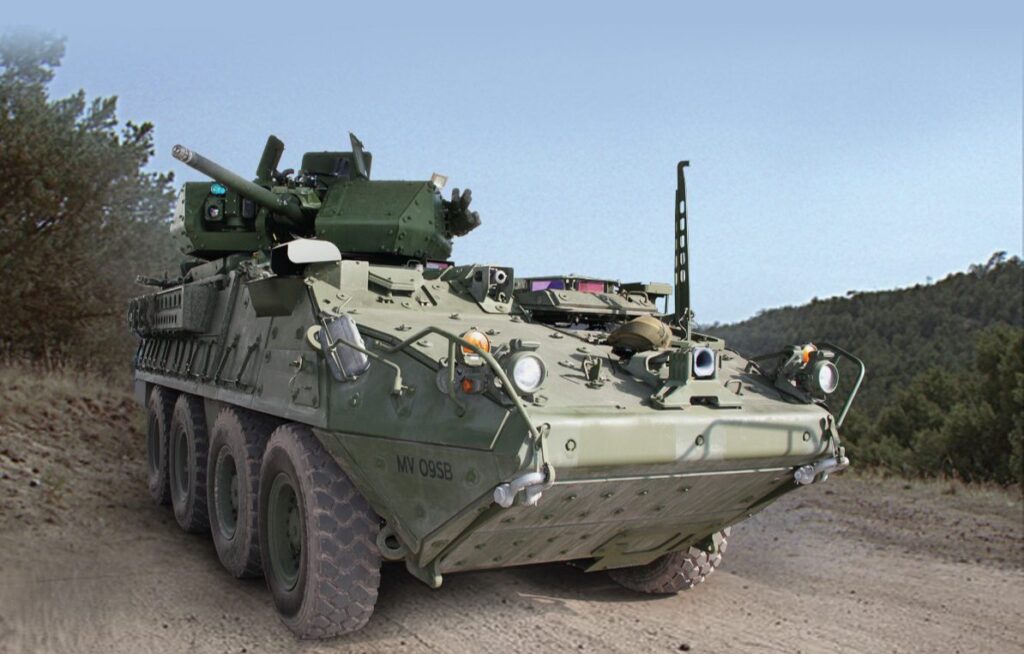
Prototype XM1296 Infantry Carrier Vehicle – Dragoon.
Today, after 18 months of urgent work, the Army rolled out its first upgunned Stryker vehicle, nicknamed Dragoon. The armored eight-wheel-drive troop transport, built by General Dynamics and normally armed with no more than a 0.50 calibre (12.7 millimeter) machinegun in an unprotected mount, has been rebuilt with an armored turret containing a 30 mm quickfiring cannon.
That’s enough firepower, the Army computes, to dispose of other lightly armored vehicles like the Russian BMP troop carrier. If the Russians invade the Baltics, the Stryker Dragoon can’t stop their heavy tanks, but it can thin out their scout vehicles and transports, allowing American M1 tanks to focus their 120 mm firepower on the heaviest targets.
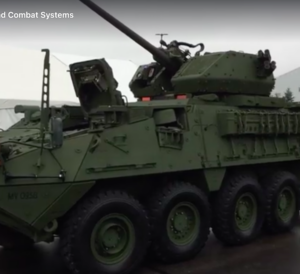
Stryker Dragoon, side view of turret
Currently, the heaviest US force stationed permanently in Europe is the 2nd Cavalry Regiment, aka the 2nd Dragoons, mounted in Strykers. The other unit is the 173rd Airborne Brigade, a light infantry unit with no armored vehicles at all — although the Army’s Mobile Protected Firepower program is feverishly developing a light tank to support the light infantry. No heavy tank formations are home-based in Europe at all, though brigades now rotate through on a regular basis to deter the Russians.
Feeling understandably undergunned, the 2nd Cavalry made an urgent request last year for 81 Strykers with more powerful weapons. The new vehicle derives its nickname from the regiment’s.
“Dragoon” is an appropriate term for Stryker forces. More mobile and better protected than foot troops, they’re still nowhere near as tough as M1 tank or the M2 Bradley troop carrier. Like the original dragoons in the black powder and musket days, Stryker units are a hybrid that ride to the battle but then dismount to fight on foot in battle.
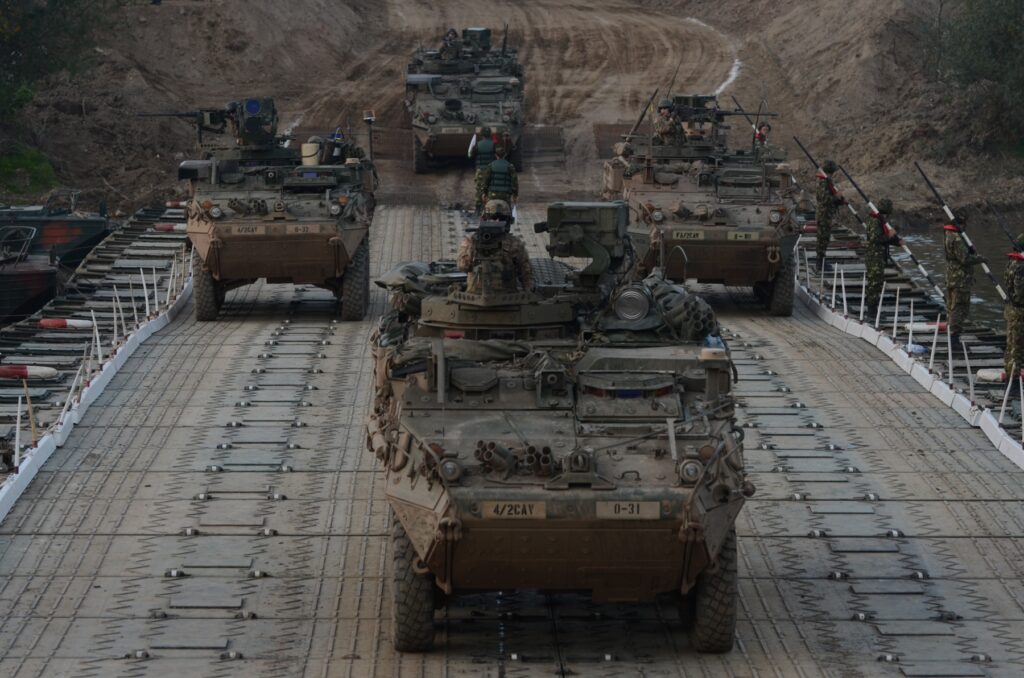
Standard Strykers (without turret) cross a temporary bridge in Romania during exercise “Dragoon Crossing.”
Despite intense initial criticism, Strykers proved successful in Iraq as a highly mobile reserve. Their 20-plus-ton 8×8 vehicles could move them more rapidly by road than 35-plus-ton tracked Bradleys, consuming less fuel and fewer spare parts in the process. (The 2nd Cav showed off this same mobility with an epic 1,100-mile “Dragoon Ride” across the threatened states of Eastern Europe). But the Strykers were also heavy enough to endure roadside bomb blasts much better than Humvees.
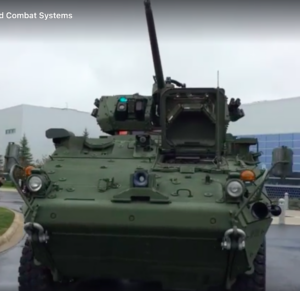
Stryker Dragoon, front view
In Iraq, Strykers only needed machineguns because the insurgent enemy had no armored vehicles of his own. The Army had tried installing heavier weapons on Strykers, from a 105 cannon on the Stryker MGS (Mobile Gun System) — the weight and recoil were just too much — to a TOW anti-tank missile on the Stryker ATGM (Anti-Tank Guided Missile). But these weapons took up so much space and weight that the Strykers carrying them had no room to carry infantry, so only a few were bought to serve as specialized support vehicles. The vast majority of Strykers remained equipped with 12.7 mm or smaller guns.
As the US military reoriented anxiously to Europe and the heavily armored Russian army, however, 12.7 mm looked awfully small. With this prototype Dragoon and its 30 mm cannon, the Army’s well on its way to fixing that. With the right airbursting ammunition, the 30 mm weapon might even take out low-flying aircraft. In parallel, to defeat Russian drones, the Army is experimenting with a low-powered anti-aircraft laser, also mounted on a Stryker. Once derided by heavy-tank hardliners as an underarmored dead end, the Stryker now seems a versatile and vital part of the Army’s future.
The full text of the announcement from Program Executive Office – Ground Combat Systems follows below.
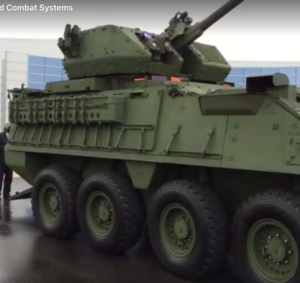
Stryker Dragoon, side view
NEWS RELEASE: First Stryker prototype with enhanced firepower delivered to U.S. Army
Sterling Heights, Mich. (Oct. 27, 2016) – This morning, the Army celebrated the delivery of the first prototype Stryker Infantry Carrier Vehicle outfitted with a 30 mm cannon for increased lethality. This is the first of eight prototype vehicles upgraded with significant lethality capabilities to address an emerging capability gap in the European theater of operations.
“Not only does this provide improved firepower, it also enhances vehicle survivability while providing stand-off against potential threat weapons,” said Maj. Gen. David G. Bassett, the Army’s program executive officer for Ground Combat Systems. “This symbolic event illustrates the Army’s commitment to meeting the needs of our Soldiers in harm’s way – ahead of schedule and on budget.”
Last July, the Army approved a Directed Requirement to increase lethality for 81 Stryker vehicles for the 2nd Cavalry Regiment to provide Stryker Brigade Combat Teams (SBCTs) with direct fire support to its mounted and dismounted infantry. This led to an accelerated acquisition effort to integrate an unmanned turret with a 30mm cannon on to a Stryker Infantry Carrier Vehicle. Fielding of this increased capability is required by 2018.
“Future operations will take place concurrently in the air and on the ground, increasingly in urban settings, integrating capabilities from the domains of sea, space and cyberspace,” said Gen. Daniel B. Allyn, the Army’s vice chief of staff. “This environment will place a premium on unmanned systems, lethal technologies, and rapid maneuver capabilities this Stryker system exemplifies.”
The upgrade from funding receipt to prototype delivery spanned a scant 15-months and included design, build and integration of a Kongsberg MCT-30mm Weapon System, remotely operated, unmanned turret, a new fully integrated Commander’s Station, upgraded driveline componentry and hull modifications.
The upgraded Stryker vehicle will be known as the, Dragoon, the name of the 2nd Cavalry Regiment, and we recently assigned the nomenclature XM1296 Infantry Carrier Vehicle – Dragoon.
The prototype vehicles will begin a series of industry “shakedown” testing prior to industry contractually delivering the vehicles to the Army in December. Government testing on the platforms begins in January 2017.
“The insights gleaned from this urgent effort will be applied towards planning the fleet-wide lethality program for the Stryker, and is another example of how we are developing combat systems in concert with the Army’s Operating Concept and Combat Vehicle Modernization Strategy,” added Bassett.
In addition, the Army has provided programmatic direction to initiate the first two elements of the Stryker Fleet Lethality strategy — providing an under-armor Javelin capability for the Stryker and improving the capabilities of the Stryker Anti-Tank Guided Missile vehicle to better locate and engage targets via networked fires.
# # #
Subscribe to our newsletter
Promotions, new products and sales. Directly to your inbox.
